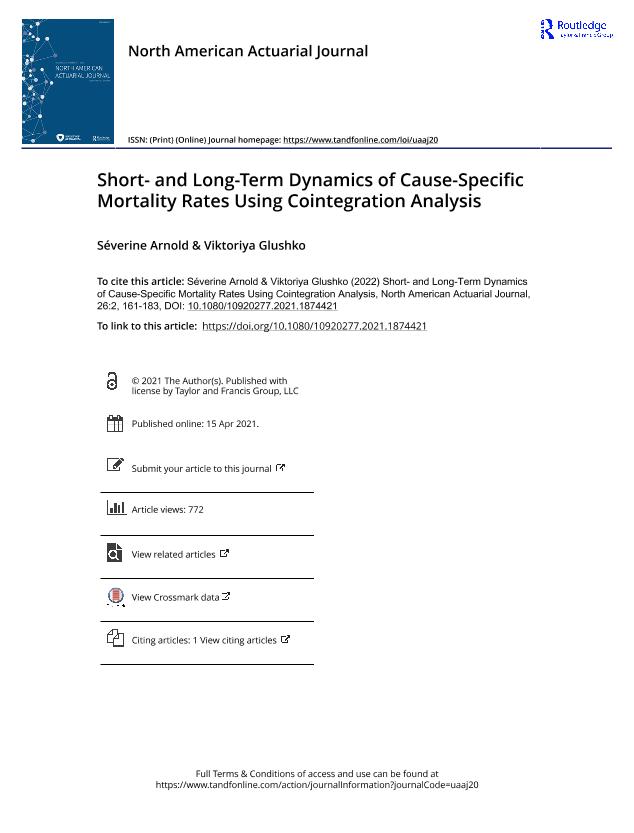Short- and Long-Term Dynamics of Cause-Specific Mortality Rates Using Cointegration Analysis

Contenido multimedia no disponible por derechos de autor o por acceso restringido. Contacte con la institución para más información.
| Tag | 1 | 2 | Value |
|---|---|---|---|
| LDR | 00000cab a2200000 4500 | ||
| 001 | MAP20220017565 | ||
| 003 | MAP | ||
| 005 | 20220911210923.0 | ||
| 008 | 220613e20220613esp|||p |0|||b|spa d | ||
| 040 | $aMAP$bspa$dMAP | ||
| 084 | $a6 | ||
| 100 | 1 | $0MAPA20140001767$aArnold, Séverine | |
| 245 | 1 | 0 | $aShort- and Long-Term Dynamics of Cause-Specific Mortality Rates Using Cointegration Analysis$cSéverine Arnold, Viktoriya Glushko |
| 520 | $aThis article applies cointegration analysis and vector error correction models to model the short- and long-run relationships between cause-specific mortality rates. We work with the data from five developed countries (the United States, Japan, France, England and Wales, and Australia) and split the mortality rates into five main causes of death (infectious and parasitic, cancer, circulatory diseases, respiratory diseases, and external causes). We successively adopt short- and long-term perspectives, and analyze how each cause-specific mortality rate impacts and reacts to the shocks received from the rest of the causes. We observe that the cause-specific mortality rates are closely linked to each other, apart from the external causes that show an entirely independent behavior and hence could be considered as truly exogenous. We summarize our findings with the aim to help practitioners set more informed assumptions concerning the future development of mortality. | ||
| 650 | 4 | $0MAPA20080555306$aMortalidad | |
| 650 | 4 | $0MAPA20080578848$aAnálisis de datos | |
| 650 | 4 | $0MAPA20080579258$aCálculo actuarial | |
| 700 | 1 | $0MAPA20220006125$aGlushko, Viktoriya | |
| 773 | 0 | $wMAP20077000239$g13/06/2022 Tomo 26 Número 2 - 2022 , p. 161-183$x1092-0277$tNorth American actuarial journal$dSchaumburg : Society of Actuaries, 1997- |

